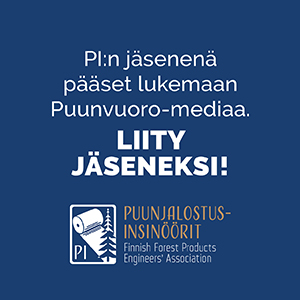The world’s forest area covers 4.03 billion hectares, i.e. 31 per cent of the earth’s land area. A fifth of the world’s forest area – 809 hectares in all – is located in Russia, 45% of which is covered by forest. 80% of Russia’s forests are located in Siberia and East Asia, while the rest are located on the European side of Russia.
Russia’s population of 143 million consumes only 50 kilos of paper per capita. The country’s fibre and paper production is able to satisfy the home-market demand, but in terms of specialty papers and coated packaging board, it has to rely on imports. Russian sawn timber is exported to North Africa, Europe and China. Pulp is exported to China and elsewhere in Asia. Markets for Russian kraft sack paper are found around the world.
Russia has now seen the establishment of its own association of paper engineers, the Association of Specialists of the Pulp and Paper Industry. The association has more than 250 members, all under the age of 45. Board member Sergey Malkov believes in the association’s capacity to be an important element in the development of the country’s forest industry.
Analysis
Investment plans topping 10 billion euros
With up to 60 per cent of the world’s coniferous forests, Russia has the world’s biggest forest resources. The development of the country’s forest industry has long been a topic of discussion, but no significant progress has been made in the past 25 years, since the breakup of the Soviet Union.
Investments require trust. The forest industry’s development has been slowed by a number of factors, including legislation, bureaucracy and corruption. Many people also consider state-owned forests a risk. Furthermore, the country lacks the generation of competent 30–40-year-old forest industry engineers.
Given that Russia has plenty of areas with numerous sawmills but no pulp mills at all, millions of cubic metres of good pulpwood ends up being burnt. The country’s biggest forest area Krasnoyarsk, for example, has an area equal to the entire area of Finland, but not a single pulp mill. This in spite of the fact that the area’s infrastructure exists due to the sawmill industry.
However, awareness of the forest industry’s potential has now increased. The investments in Russia’s forest industry over the past 15 years amount to EUR 10 billion and are estimated to amount to EUR 10–15 billion in the next few years. The reason for the investment is clear. Currently, the forest industry’s earnings in Russia are the best among all branches of industry, including the oil sector.
Investments are attractive due to the low cost-level. In Siberia, wood costs some EUR 12–15 per cubic metre, whereas in Finland, it costs about EUR 40–45. While the availability of wood is not on par with Finland’s, logistics can be put in shape at a reasonable cost. Regarding exports, the costs of logistics to Chinese markets, for instance, are also competitive.
It is, therefore, no surprise that investors include both Russian companies and individual investors and global forest industry companies and foreign investors. Two large-scale pulp projects, for example, are currently underway in China. Russia welcomes foreign investors, provided that they develop the country’s economy and support the industry’s modernisation.
Sergey Malkov
Member of the Board
The Association of Specialists of the Pulp and Paper Industry



